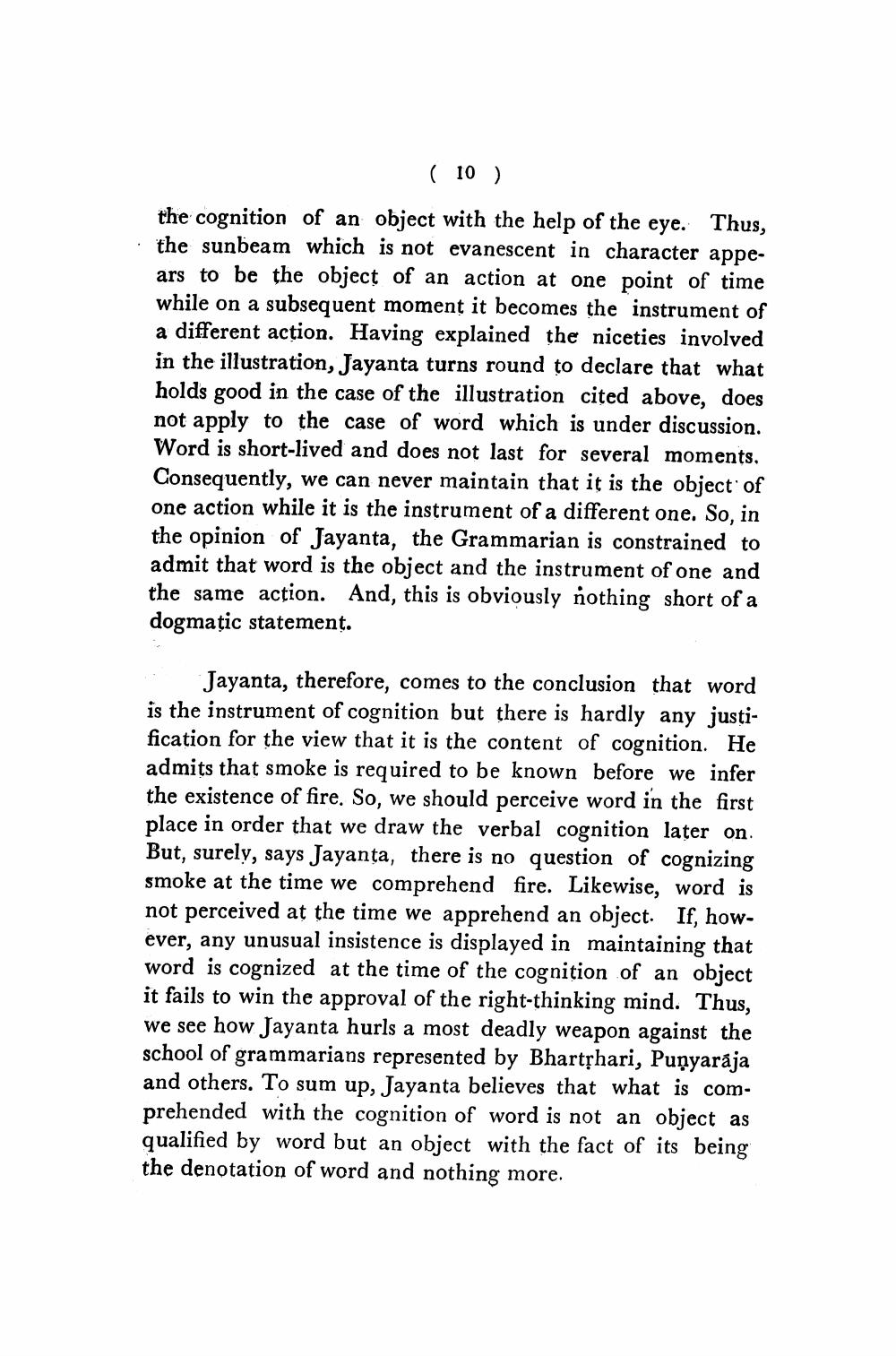________________
( 10 )
the cognition of an object with the help of the eye. Thus, the sunbeam which is not evanescent in character appears to be the object of an action at one point of time while on a subsequent moment it becomes the instrument of a different action. Having explained the niceties involved in the illustration, Jayanta turns round to declare that what holds good in the case of the illustration cited above, does not apply to the case of word which is under discussion. Word is short-lived and does not last for several moments. Consequently, we can never maintain that it is the object of one action while it is the instrument of a different one. So, in the opinion of Jayanta, the Grammarian is constrained to admit that word is the object and the instrument of one and the same action. And, this is obviously nothing short of a dogmatic statement.
Jayanta, therefore, comes to the conclusion that word is the instrument of cognition but there is hardly any justification for the view that it is the content of cognition. He admits that smoke is required to be known before we infer the existence of fire. So, we should perceive word in the first place in order that we draw the verbal cognition later on. But, surely, says Jayanta, there is no question of cognizing smoke at the time we comprehend fire. Likewise, word is not perceived at the time we apprehend an object. If, however, any unusual insistence is displayed in maintaining that word is cognized at the time of the cognition of an object it fails to win the approval of the right-thinking mind. Thus, we see how Jayanta hurls a most deadly weapon against the school of grammarians represented by Bhartṛhari, Punyarája and others. To sum up, Jayanta believes that what is comprehended with the cognition of word is not an object as qualified by word but an object with the fact of its being the denotation of word and nothing more.




